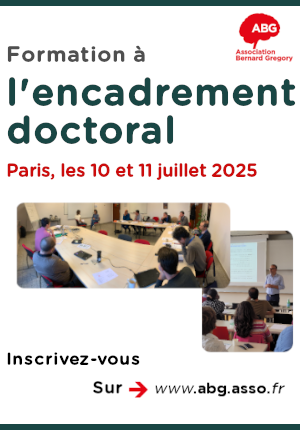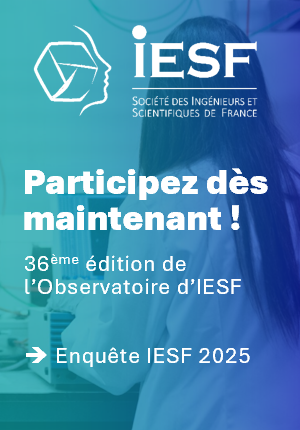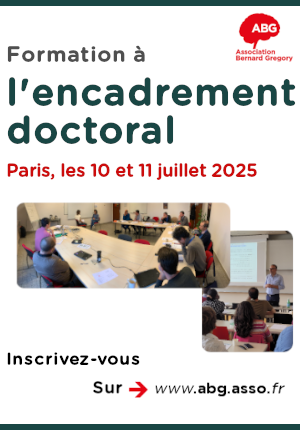Réseaux Neuronaux Profonds à Hypergraphe Basés sur la Théorie des Jeux // Hypergraph Deep Neural Networks based on Game Theory
|
ABG-126310
ADUM-55441 |
Thesis topic | |
| 2024-10-16 |
Université Paris-Saclay GS Informatique et sciences du numérique
Versailles cedex - France
Réseaux Neuronaux Profonds à Hypergraphe Basés sur la Théorie des Jeux // Hypergraph Deep Neural Networks based on Game Theory
Apprentissage Profond, Hypergraphe, Théorie des Jeux
Deep learning,, Hypergraph, Game theory
Deep learning,, Hypergraph, Game theory
Topic description
Les représentations graphiques des réseaux de neurones profonds traditionnels (telles que les réseaux convolutifs, les transformers, modèles de langues larges: LLMs) ont eu un impact sur de nombreuses méthodes d'apprentissage automatique pour la classification et la régression [1]. L'intelligence artificielle générative a également bénéficié de ces types de modèles dans lesquels seules les connexions par paires entre les données sont prises en compte. Cependant, notre quête de la perfection dans ce domaine basé sur l'apprentissage est motivée par notre mimétisme du système cognitif humain [2]. Ce système biologique complexe est loin de supposer que les données sont connectées par paires. L'interaction des neurones va bien au-delà des connexions par paires et est encore plus complexe. A titre d'exemple, les scénarios impliquant des données multimodales ont montré que la modélisation de la corrélation des données pourrait être plus complexe. Une structure de graphe simple dans laquelle une arête (ou un arc) représentée par deux nœuds (ou sommets) n'est pas suffisante pour bien représenter toutes les interactions multidimensionnelles. Par conséquent, il est impératif de concevoir une représentation graphique plus riche, qui serait proche de la réalité physique du système étudié. En outre, l'interaction des nœuds dans cette nouvelle structure doit également répondre aux besoins du fonctionnement de ce système.
------------------------------------------------------------------------------------------------------------------------------------------------------------------------
------------------------------------------------------------------------------------------------------------------------------------------------------------------------
Traditional deep graph representation (such as convolutional neural networks, transformers, large language models: LLMs) have impacted many machine learning classification and regression methods [1]. Generative artificial intelligence has also benefited from these types of models in which only pairwise connections among data are considered. However, our search for perfection within this learning-based realm is driven by our mimicking of the human cognitive system [2]. This complex biological system is far from assuming that data are pairwise connected. The neuron's interaction is certainly beyond pairwise connections and even far more complicated. For example, scenarios that involve multi-modal data have shown that data correlation modeling could be far more complex. A simple graph structure in which an edge (or an arc) represented by two nodes is not sufficient to represent all multidimensional interactions. Therefore, on the one hand, it is imperative to design a richer graphical representation, which would be close to the physical reality of the studied system. On the other hand, the interaction of the nodes in this new structure must also meet the needs of the functionality of this system.
------------------------------------------------------------------------------------------------------------------------------------------------------------------------
------------------------------------------------------------------------------------------------------------------------------------------------------------------------
Début de la thèse : 01/10/2025
------------------------------------------------------------------------------------------------------------------------------------------------------------------------
------------------------------------------------------------------------------------------------------------------------------------------------------------------------
Traditional deep graph representation (such as convolutional neural networks, transformers, large language models: LLMs) have impacted many machine learning classification and regression methods [1]. Generative artificial intelligence has also benefited from these types of models in which only pairwise connections among data are considered. However, our search for perfection within this learning-based realm is driven by our mimicking of the human cognitive system [2]. This complex biological system is far from assuming that data are pairwise connected. The neuron's interaction is certainly beyond pairwise connections and even far more complicated. For example, scenarios that involve multi-modal data have shown that data correlation modeling could be far more complex. A simple graph structure in which an edge (or an arc) represented by two nodes is not sufficient to represent all multidimensional interactions. Therefore, on the one hand, it is imperative to design a richer graphical representation, which would be close to the physical reality of the studied system. On the other hand, the interaction of the nodes in this new structure must also meet the needs of the functionality of this system.
------------------------------------------------------------------------------------------------------------------------------------------------------------------------
------------------------------------------------------------------------------------------------------------------------------------------------------------------------
Début de la thèse : 01/10/2025
Funding category
Funding further details
Programme COFUND DeMythif.AI
Presentation of host institution and host laboratory
Université Paris-Saclay GS Informatique et sciences du numérique
Institution awarding doctoral degree
Université Paris-Saclay GS Informatique et sciences du numérique
Graduate school
580 Sciences et Technologies de l'Information et de la Communication
Candidate's profile
Ingénieur / Master dans un domaine pertinent (par exemple, informatique, ML/IA, statistiques...)
Excellente compréhension des bases de l'apprentissage automatique. Familier avec les modèles récents en intelligence artificielle : transformers, modèles de diffusion, auto-encodeurs...etc.
Excellentes compétences en programmation, notamment avec Python, PyTorch
Autonome et capable de s'adapter rapidement à la littérature / aux technologies récentes.
End of engineering degree / Master's degree in a relevant field (e.g., computer science, ML/AI, Statistics ...) Excellent understanding of machine learning basics. Familiar with recent Artificial Intelligence: transformers, diffusion models, auto-encoder…etc. Excellent programming skills, especially with Python, Pytorch Autonomous and able to quickly adapt to recent scientific literature/technologies.
End of engineering degree / Master's degree in a relevant field (e.g., computer science, ML/AI, Statistics ...) Excellent understanding of machine learning basics. Familiar with recent Artificial Intelligence: transformers, diffusion models, auto-encoder…etc. Excellent programming skills, especially with Python, Pytorch Autonomous and able to quickly adapt to recent scientific literature/technologies.
2025-04-30
Apply
Close
Vous avez déjà un compte ?
Nouvel utilisateur ?
More information about ABG?
Get ABG’s monthly newsletters including news, job offers, grants & fellowships and a selection of relevant events…
Discover our members
 Laboratoire National de Métrologie et d'Essais - LNE
Laboratoire National de Métrologie et d'Essais - LNE  Nokia Bell Labs France
Nokia Bell Labs France 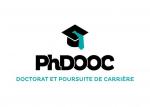 PhDOOC
PhDOOC 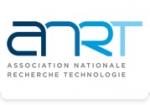 ANRT
ANRT  SUEZ
SUEZ  CASDEN
CASDEN  Aérocentre, Pôle d'excellence régional
Aérocentre, Pôle d'excellence régional  Groupe AFNOR - Association française de normalisation
Groupe AFNOR - Association française de normalisation  Institut Sup'biotech de Paris
Institut Sup'biotech de Paris  MabDesign
MabDesign  CESI
CESI  Généthon
Généthon  Tecknowmetrix
Tecknowmetrix 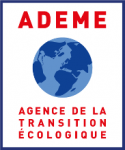 ADEME
ADEME 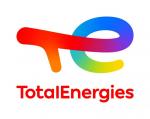 TotalEnergies
TotalEnergies  MabDesign
MabDesign  ONERA - The French Aerospace Lab
ONERA - The French Aerospace Lab  Ifremer
Ifremer  ASNR - Autorité de sûreté nucléaire et de radioprotection - Siège
ASNR - Autorité de sûreté nucléaire et de radioprotection - Siège

